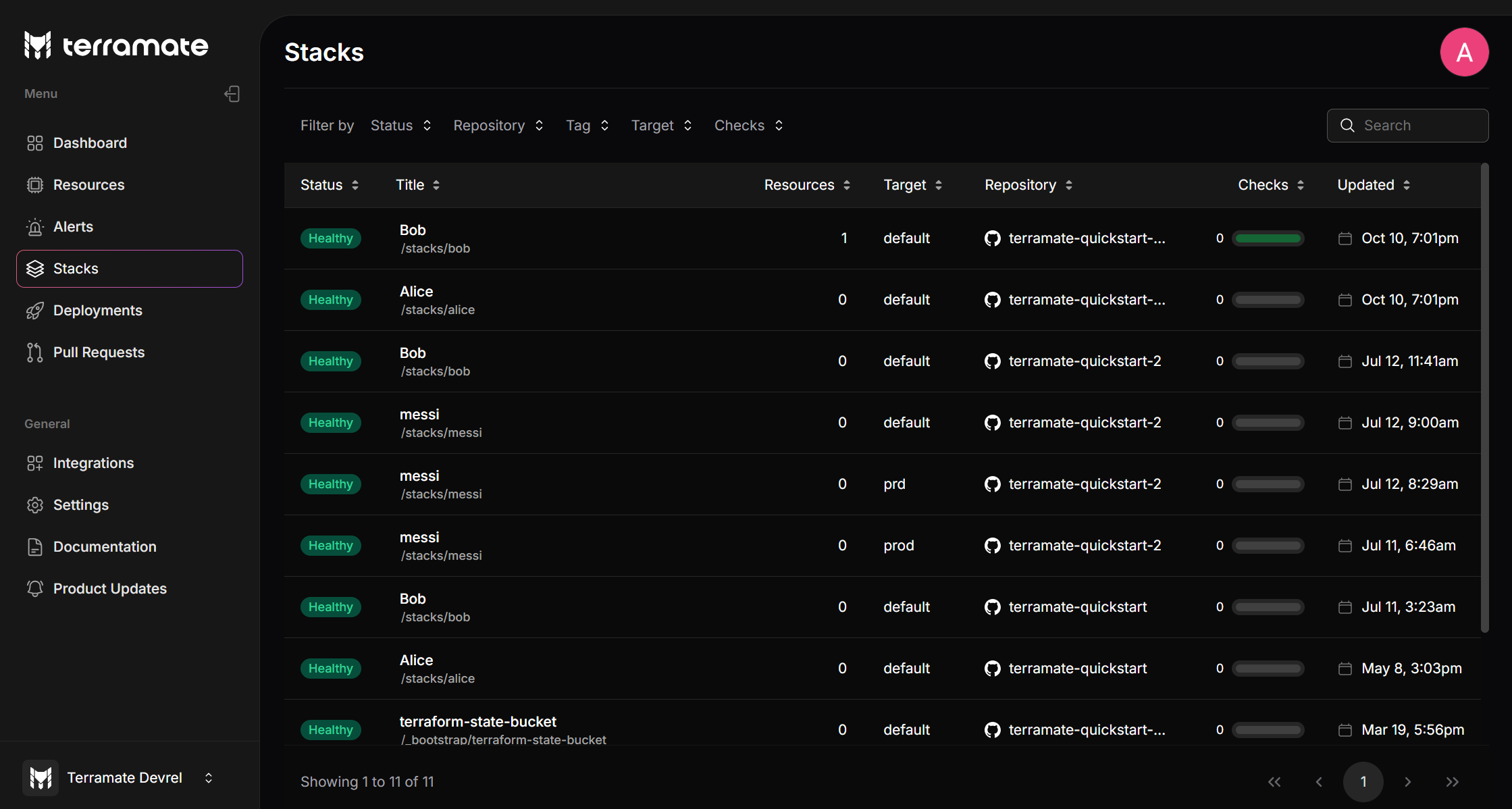Stack Status
Each stack can be healthy or unhealthy (e.g. failed or drifted) depending on the result of deployments or drift runs.

Healthy
A healthy stack was deployed successfully and does not have any detected drifts.
This is the desired status for all stacks, which would be the case in an ideal world.
In the Infrastructure as Code lifecycle, we face Previews of planned changes, Deployments of changes, and Drifts identifying detected changes outside of code.
Failed
A failed stack is considered unhealthy. This status is reached after deployment of the stack failed to apply the planned changes successfully.
A failed stack can only become healthy again after a follow-up deployment of the stack succeeds without errors or when a drift run does not detect any differences between the desired configuration (Code) and applied configuration (Cloud).
If a deployment fails in a stack that is in drifted state, the stack status will be updated to failed.
An example of a deployment command is terraform apply which can either successfully apply planned changes or fail in the process and leave the stack in a partially applied state.
Drifted
A drifted stack is considered unhealthy. This status is reached after a drift run detects any differences between the desired configuration (Code) and applied configuration (Cloud) on a healthy stack.
If a drift is detected in a failed stack, the status will NOT be updated to drifted as the drift is expected.
When no drift is detected for a failed stack, the stack status will be set to healthy again. This change is considered to be auto-healing as no user interaction in form of a new deployment is required.
Orchestrate Stacks by Status
You can run commands on stacks filtered by their cloud status using the terramate run command. A stack comprises multiple configuration files that work together as a unit, so this feature lets you manage the entire stack collectively. With a Terramate Cloud login, you can filter stacks by status—such as drifted, unhealthy, or failed—and then run commands across all matching stacks. For example, to apply changes to all stacks with a drifted status, use: terramate run --status=drifted -- terraform apply For more details, refer to the terramate run command.
Usage
terramate run --status=drifted|unhealhty|failed
Example
For applying all stacks with the drifted status, the command below can be used:
terramate run --status=drifted -- terraform apply
Trigger Stacks by Status
Use the terramate trigger command to force a stack to be marked as changed—even without code modifications. Once you commit the trigger file, terramate run executes commands on the affected stacks. For Terramate Cloud users, the --status=<status> flag lets you target stacks in a specific state. For more details, refer to the terramate trigger command.
Usage
terramate trigger --status <stack-path>
Example
Trigger all drifted stacks as changed:
terramate trigger --status=drifted